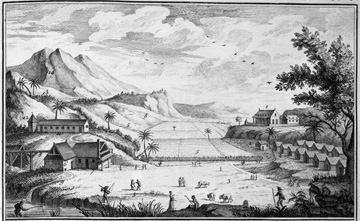François Makandal ? — 1758

François Makandal (or Mackandal) was an enslaved African runaway and rebel leader in Saint-Domingue (modern Haiti) during the early– to mid-eighteenth century. Little definitive information is known about Makandal except that he was executed in Cap-Français in January 1758 for being a runaway, rebel, and murderer. He was born in Africa and brought to the north of Saint-Domingue to work on a sugar plantation at the age of twelve.
He may have been from West Africa, as he sometimes claimed to be Muslim, but no records show his specific origins. What is clear is that he was a powerful figure in the lives of both planters and slaves. After losing an arm in a sugar mill, Makandal was made to care for livestock. He eventually fled the plantation and joined a maroon community where he became a leader. Makandal claimed to have supernatural abilities, which helped him to successfully organize different maroon groups to coordinate their activities. His supernatual claims aside, Makandal did have extensive knowledge of plants and was able to make powerful poisons.
Using the network of maroons and sympathetic plantation slaves, Makandal and his followers successfully poisoned plantation owners, animals, and even other enslaved people. Authorities feared that Makandal planned to kill all the island’s white inhabitants and they believed that he had the means to do so. Short of launching a rebellion, Makandal was captured and sentenced to death at Cap-Français in January 1758. He was to be burned at the stake, but at the first flames, he broke free. Makandal was subdued immediately and bound to a new board before being put again into the fire. In his initial escape, Makandal magnified his legendary status within the stories and traditions of Saint-Domingue and the Haitian Revolution that followed.







